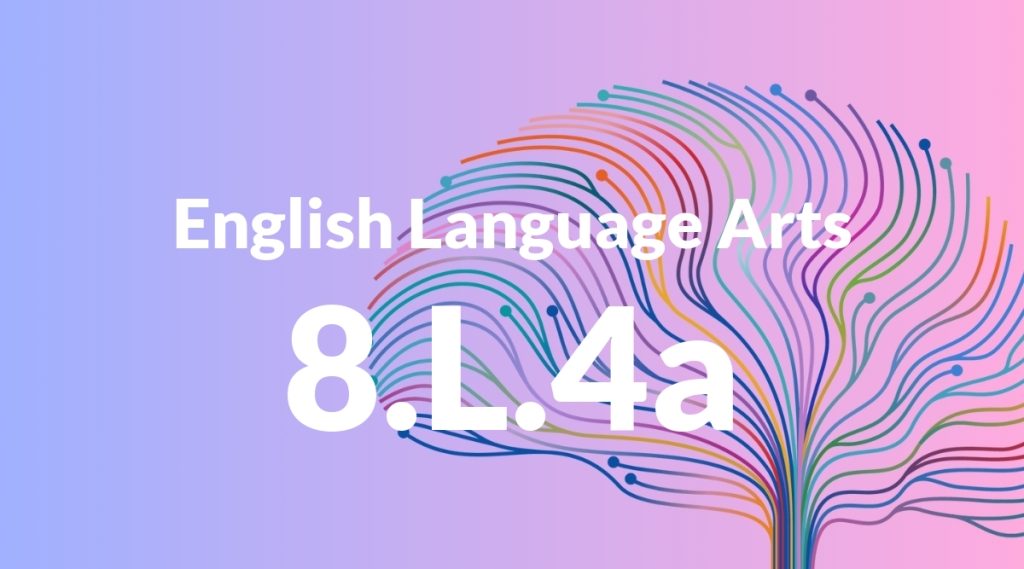Standard: 8.L.4 – Determine or clarify the meaning of unknown and multiple-meaning words or phrases based on grade 8 reading and content, choosing flexibly from a range of strategies.
Grade level: Grade 8
Subject: English Language Arts
Domain: Language
Teacher Overview
This standard emphasizes the importance of understanding and interpreting unknown and multiple-meaning words or phrases. It is crucial for students to be able to determine meanings using various strategies, which enhances their overall reading comprehension and prepares them for more complex texts. Students should already be comfortable with basic vocabulary, context clues, and using reference materials such as dictionaries and thesauruses.
After mastering this standard, students will be better equipped to handle complex texts and will have a robust vocabulary strategy toolkit for high school and beyond.
Common Misconception 1
Some students may believe that words have only one meaning, which can limit their understanding of texts where words are used in different contexts.
Intervention 1
Use texts that show words in various contexts and have students determine the different meanings. Discuss how context affects word meaning.
Common Misconception 2
Students might think that the dictionary is the only tool for finding word meanings, which can hinder their ability to use context clues or word parts.
Intervention 2
Introduce lessons on using context clues, prefixes, suffixes, and root words to determine meanings, alongside dictionary use.
Prerequisite Knowledge
Students should have a foundational understanding of basic vocabulary and context clues, as well as experience with using reference materials like dictionaries and thesauruses.
Subsequent Knowledge
Students will develop advanced vocabulary skills, enabling them to understand and interpret complex texts in high school and beyond. They will also be able to use context and word analysis strategies to enhance their reading comprehension.
Instructional Activities
- Context Clue Scavenger Hunt: Students find and discuss words in a text that have multiple meanings.
- Word Analysis Workshops: Students break down words into prefixes, suffixes, and roots to determine meanings.
- Vocabulary Journals: Students keep a journal of new words they encounter, including definitions and example sentences.
- Role-Playing Exercises: Students use new vocabulary in dialogues or skits to demonstrate understanding.




